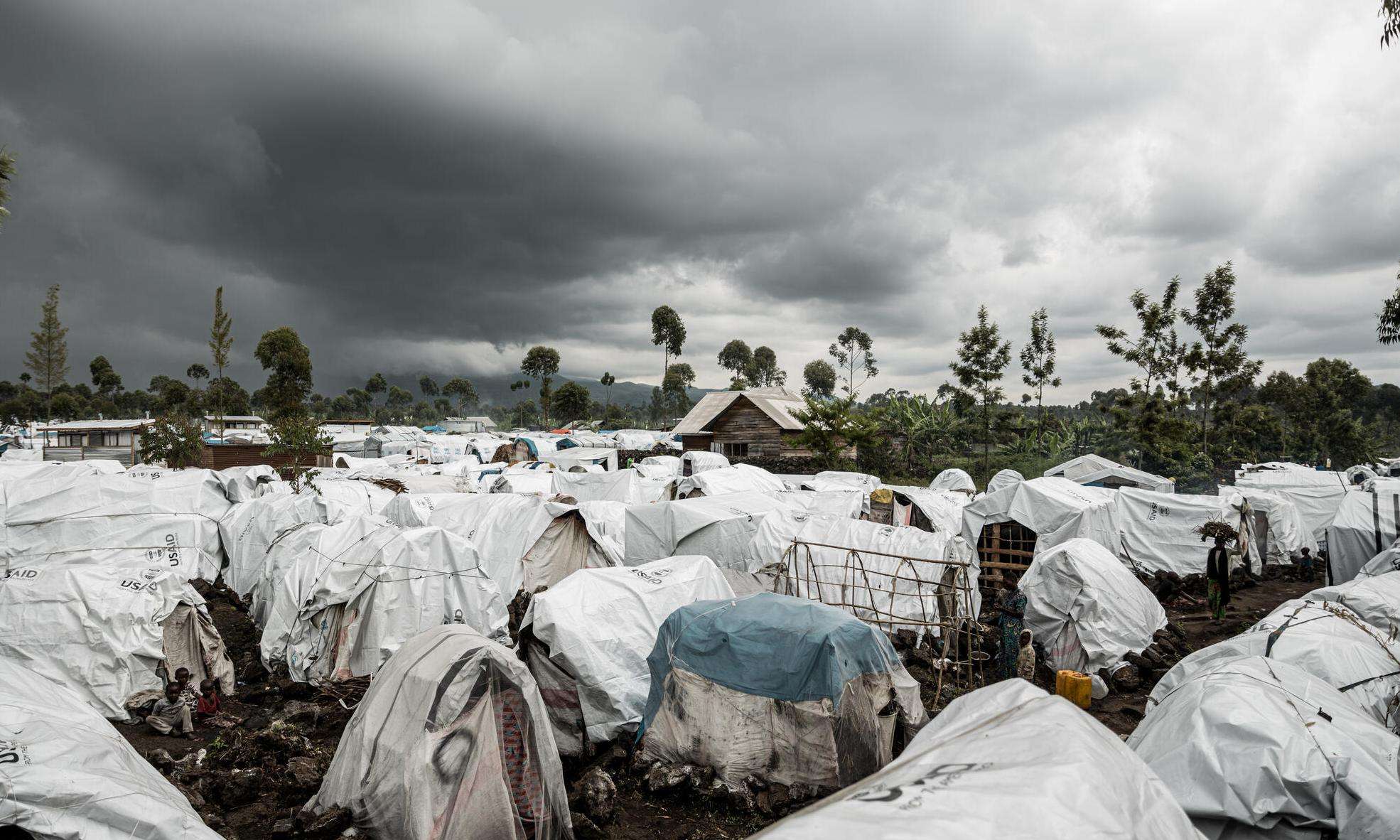Some 600,000 displaced people are living in desperate conditions—facing inadequate food supply and frequent violence—in camps around Goma, in eastern Democratic Republic of Congo’s (DRC) North Kivu region. Doctors Without Borders/Médecins Sans Frontières medical teams have witnessed alarming rates of malnutrition and mortality in some of the camps. This week, United Nations (UN) agencies announced they would step up their efforts to meet the needs of people in the region. These intentions need to be urgently translated into concrete action: immediate assistance and protection that meet the needs of displaced people.
“The scale and duration of displacement is historic for eastern DRC,” said Dr. Guyguy Manangama, head of emergency programs for MSF “This gives us an idea of the response that is needed. Yet hundreds of thousands of people continue to be largely neglected by the aid community, despite the growing awareness of the humanitarian system."
For months, MSF has raised the alarm on the slow roll out and inadequate level of aid provided to people who have fled their homes following fighting stemming from the resurgence of the M23 armed group. Despite some increase in humanitarian aid in recent weeks, approximately 600,000 people currently living in displacement sites surrounding Goma are not receiving assistance. The ongoing lack of food and suitable shelters is particularly concerning.
"This catastrophic situation is even more incomprehensible given its proximity to the major city of Goma, where aid could easily be distributed,” said Dr. Manangama, head of emergency programs for MSF. “Relief activities are being developed here and there, but without any coordination or overview of the situation in the camps. The scale of mobilization of the aid system is far from sufficient and far too slow. There is also a blatant lack of visibility and information on the aid provided and on the number of people in need of support—information [that] is necessary for the proper coordination of aid organizations."
On June 16, the UN announced it would raise the severity of the crisis to the highest level. While this is a significant step, it must be followed by a substantial, rapid, and tangible increase in the aid provided to people living in camps.
A retrospective mortality survey carried out by MSF in April in Rusayo, Shabindu, and Don Bosco camps, revealed alarming mortality rates among children under 5 years old in the first four months of the year. In Rusayo—where an estimated 85,000 to 100,000 people are living—on average, more than three children had died every day during this period.
MSF carried a rapid malnutrition survey at the end of May in Elohim camp—which had a population of around 4,000 at the time. Data revealed severe acute malnutrition rates reaching 4.9 percent among children under 5 years old. In May, one in four children in Elohim camp were treated by MSF for malnutrition. Many displaced people reported that they had not received food assistance since their arrival—for some of whom was January. At other camps, including Rusayo and Shabindu, some food has been distributed, but not to all residents. This alarming situation is compounded by several risk factors such as measles and cholera, which are also spreading in the camps, and can make children more vulnerable to the consequences of malnutrition.
The shortage of food also impacts the health of adults, especially women, who often have to leave the camps to look for food or firewood, which puts them at increased risk of violence, including sexual violence. In early May, MSF warned about the high number of victims of sexual violence its teams had provided care to. In two weeks, 674 women from Bulengo, Lushagala, Kanyaruchinya, Elohim, Munigi, and Rusayo camps reported having experienced sexual violence. MSF teams still report an average of 40 women per day from these camps seeking care for sexual violence. Although humanitarian organizations are aware of the gravity of the situation, aid and protection measures only reach a small proportion of sexual violence survivors. The safety of civilians inside and outside the camps must be urgently improved.
Many of displaced people arrived in the camps after experiencing extreme violence. MSF’s retrospective mortality survey in Rusayo, Shabindu and Don Bosco camps showed that violence was the main cause of death among men, and as high as 40 percent in some camps. Violence mostly occurred in their towns or while fleeing to the Goma area. This is twice the emergency threshold, which is one death per 10,000 people per day.
The humanitarian response during the first few months of the crisis at the beginning of 2022 was too slow—including MSF’s. MSF has since scaled up operations to support people in the region. Today, MSF has mobilized a further €1 million [about US$1.1 million] to provide ready-to-use therapeutic food to the most vulnerable families, especially those with children under the 5 years old suffering from acute malnutrition.
The humanitarian situation remains dire in other areas of North-Kivu, including Lubero, Masisi, and Rutshuru territories, where MSF is sometimes the only organization present, and where the level of aid available to people in need is also severely inadequate.


